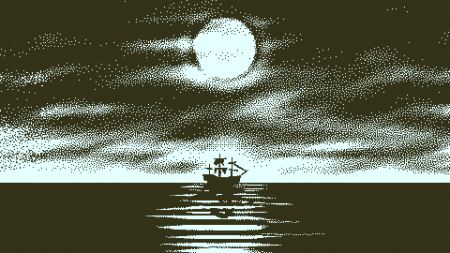Where The Scariest Thing is Bad Communication
On February 3, 2017, Total Mayhem Games released its first Steam game, We Were Here. The game is a free cooperative puzzler (with VR support!) in which two players must explore a medieval castle and uncover secrets in order to escape.
We Were Here is notable for the creativity of its various puzzles, but also for its atmosphere. The game is both dark and mysterious, tasking players with exploring an impressive medieval ruin, still haunted with spirits from the past. It’s like a creepy version of Keep Talking and Nobody Explodes, and it’s available at no cost.
In October 2019, We Were Here became a trilogy, with We Were Here Too (February 2, 2018) and We Were Here Together (October 10, 2019) joining the ranks of the two-player co-op puzzle bonanza. In addition, as of June 2020, all three games are available on Xbox One.
As the games’ graphics, control schemes, interactivity, and polish have evolved, so too has the price tag—something that angered many fans and led to relatively lower scores, particularly for We Were Here Too. Nevertheless, all three games revolve around the same four gameplay mechanics:

1. The two players communicate via walkie-talkie.
Voice chat in the We Were Here series revolves around an in-game two-way radio. The radio has two separate buttons—one to send signals and the other to receive them. These buttons emphasize the importance of not just speaking, but also listening.
My friend and I originally used Discord to circumvent these restrictions. However, when we replayed the games, we found the walkie-talkies made for a much more interesting and compelling gameplay experience. (Though the games are still fun through Discord, no doubt.)
2. Puzzles typically have one informer and one actor.
In most puzzles these games offer, one player has the information the other needs to escape the scenario. This is usually done by activating certain buttons or pushing particular levers.
Solutions can come in many different ways, but there are few puzzles where both players provide information or act without a clear divide separating them.
3. The games are set in a creepy, medieval castle.
The We Were Here series never truly strays from its medieval aesthetic. In fact, it takes place almost exclusively inside of a castle, only occasionally venturing outdoors.
A standard setting is pretty typical for a video game trilogy, so I don’t hold this against the games at all. If anything, the setting enhances the sense of danger in needing to complete these puzzles, as our protagonists could potentially die.
4. Some, but not all, puzzles have a lethal timer attached.
One interesting mechanic is the use of a deadly timer for certain puzzles. Don’t complete your end of the equation fast enough and one character (usually the actor/informed) meets their grisly fate in some way.
This only happens for some puzzles, meaning it’s more impactful when you do encounter a puzzle with this mechanic—not to mention more stressful when the music picks up as you’re trying to figure things out.
The games occasionally alter these rules, mostly for a single puzzle before returning to form. Most of the time, though, they follow these patterns to a T. In no way do the puzzles’ unifying theme kill the gameplay; I had loads of fun with almost every puzzle the series threw at me, no matter how samey they may seem.
Let’s take a greater look at each game in the franchise, and why they’re worth your time:

We Were Here
We Were Here is a wonderful (free!) video game, provided you have another person to play it with. The game isn’t super polished, with some bugs and interactivity problems. But for a spooky, 90-minute romp providing equal parts goosebumps and laughing fits—either from panic or misinterpreted directions—this game is one of the most enjoyable experiences I’ve had with a friend. It also taught me quite a bit about my friend’s speaking/listening habits—things I never knew about, despite knowing them for five years.
The pacing in We Were Here is phenomenal. The informer and actor frequently get the chance to switch roles, the puzzles ramp up in intensity and creepiness throughout, and both players have a real sense of dread as they piece together this castle’s troubled history, ghostly background voices telling the story along the way.
The game has simple but effective environmental storytelling, and the puzzles are probably the best that the series had to offer. Each is crafted to be simple, yet fun to communicate through, and there’s so much variety here. It’s clear the devs wanted to test out a lot of different puzzles, and they’re certainly fun! (Even if the bugs leave a bit to be desired…)
Speaking of bugs, VR support was added about a year post-launch. I don’t have a VR system, but from my friend’s experience… it’s not exactly perfect. Certain interactions are difficult, particularly for puzzles with an emphasis on precise movements. But when the game is this atmospheric, and VR support is free, it’s certainly worth a try if you have a compatible device.

We Were Here Too
We Were Here Too is the second puzzle game in the series and, in my opinion, the best one in terms of story and atmosphere. In general, the game’s puzzles are similar in quality to the first game’s. The informer and the actor share a much more active role in puzzle-solving, and the graphics also got quite a nice enhancement (likely because this one actually costs money).
One issue this game has, however, is that it is so damn easy compared to the first one. Given the first game was free and about the same length, it’s tough to justify the $10 price tag (even if the puzzles are slightly better).
What makes it worth the price is the atmosphere and the environmental storytelling. This game actually offers a lot more to explore, and more incentive for doing so, as players are rewarded for finding hidden objects throughout the map that unlock an extra ending. This secret-searching helped me engage with the environment and notice little secrets I never would have found otherwise.
So what this game lacks in difficulty, it makes up for in replayability. I also encountered fewer bugs, and found the puzzles more refined than the somewhat experimental ones from the first game. This time around, the puzzles incorporate greater elements of communication (symbols, guided instructions, etc.) that work best for a cooperative experience.
If this game had released standalone for ten bucks, it’d be an easy purchase. It’s because it was released after the incredible (and free) We Were Here that there’s a level of expectation for Total Mayhem’s sequel that may have been undeserved… especially since We Were Here would have been worth a small price tag in the first place.

We Were Here Together
We Were Here Together is a very solid game; it is. It has minimal bugs, more cutscenes, better graphics, more complex mechanics, more puzzles involving both players in one central area… There’s so much in this game, that it’s pretty clear it’s a third in a trilogy.
However, similar to thirds in a trilogy, it loses a lot of its flame. The puzzles become bland on the side of the informer (and even get boring on the side of the actor) with a lot of downtime and repetitive solutions. The environments are big, but empty. The cutscenes slow the pacing down to the point of being unenjoyable… There were a few problems with it that make it less interesting than the first and second games.
That’s not to say I didn’t enjoy it, or that I think it wasn’t worth the $13 asking price, because it was. The puzzles that are good are really good, and the environment is so vast and pretty that I’d say it’s still a nice expansion to what Total Mayhem has created over the past three years. I’d recommend grabbing this game if you liked the two before it.

Final Thoughts
In terms of quality, I’d rank We Were Here Too first, followed by the original and then Together.
I really, really enjoyed the atmosphere and quality of We Were Here Too, even if it doesn’t provide it for free. We Were Here still has an amazing, even exceptional, quality to it for a free-to-play VR game, and I recommend it to anybody with a friend interested in puzzle games. If you like the first two, then We Were Here Together is still quite an experience, with slightly more puzzles and a much larger budget, even if it sacrifices a little bit of the series’ soul in return.
In terms of value, however, it’s hard to beat We Were Here. The first game’s a great entry point for those looking to try the series without spending a penny. Its world is so full of mystery, split-second decision-making, and interesting puzzles, that anybody would have fun deciphering the scenarios the game has to offer.
If you have a friend, coworker, or spouse who is willing to try out a two-player co-op game, I highly recommend We Were Here… along with the rest of the series if the atmosphere, puzzle style, and sense of panic suits your play style.
Looking for more reasons to break into the series? In addition to We Were Here‘s zero-dollar price tag, We Were Here Together is part of August 2020’s Humble Choice. Unfamiliar with Humble Choice? Check out our breakdown of video game subscription services.
Jason graduated from Northeastern University with a degree in English and Game Design. For him, video games are not just an art form, but one of the greatest mediums to tell a story.
When not perpetuating the game journalist stereotype of being awful at a game and blaming the game for it, Jason likes writing short fiction novels that never get past chapter two, and playing Dungeons & Dragons.










